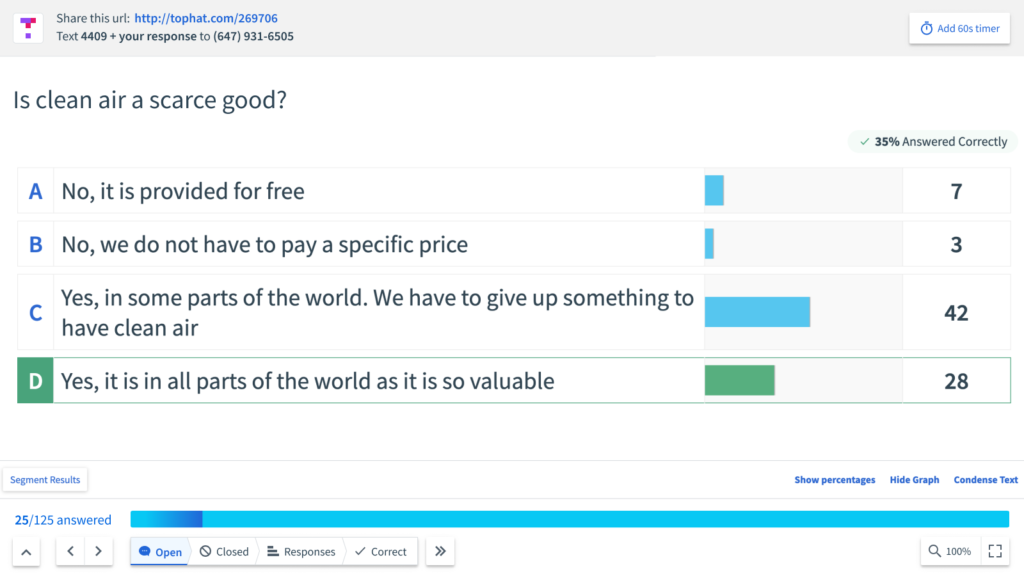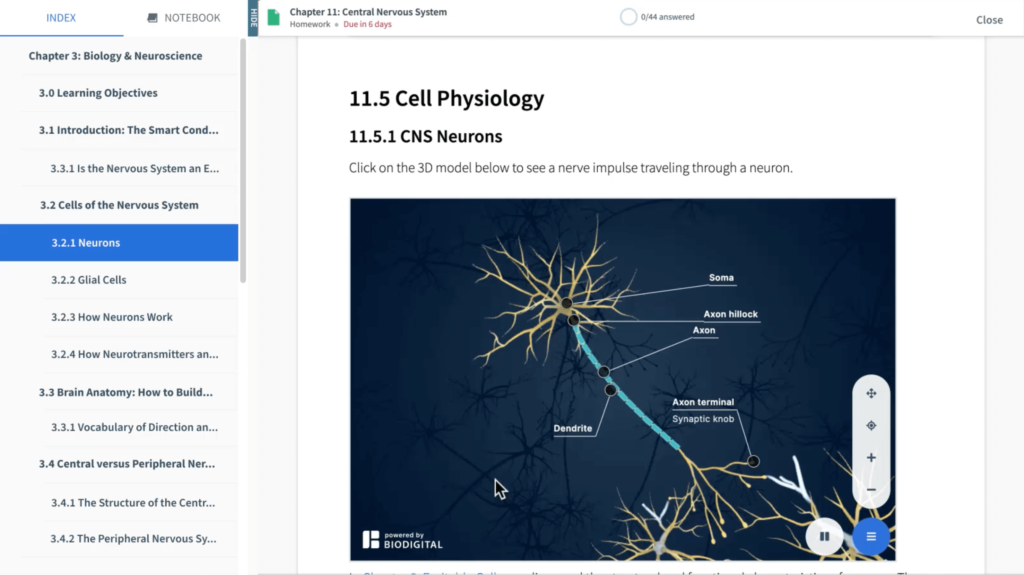The pandemic ushered in a widespread shift to online course delivery—and that came with its challenges for higher ed instructors. Collaboration, engagement and assessments were just a few of the areas that were put to the test. But looking back, some critical advantages have also emerged—one of them being that teaching and learning don’t necessarily need to happen at the same time and place.
Preserving some of these benefits—and using them in your teaching—starts with deciding what parts of your course should be delivered synchronously (live or in real-time) and where asynchronous or self-paced learning can be used. We’ve put together guidelines if you’re looking to incorporate both real-time and self-paced learning components in your in-person classroom.
What is synchronous vs. asynchronous learning?
What is synchronous instruction?
Synchronous learning occurs live and in real-time supported by video conferencing solutions like Zoom, Go-to-Meeting and YouTube Live. When used in tandem with a remote teaching platform or learning management system (LMS), synchronous learning allows educators to replicate many of the experiences found in an in-person classroom. This includes the ability for attendees to access lecture slides, respond to interactive questions and engage with their classmates in discussion threads.
What is asynchronous instruction?
Asynchronous learning takes advantage of many of the same technologies. The main difference is that it’s a form of self-paced learning and isn’t reliant on adhering to as strict a schedule. To introduce students to self-paced learning, educators can deliver content and assignments remotely using solutions like Zoom to record and post lectures online. With the right technology, learners can use interactive digital textbooks, assignments, homework questions and discussion threads to engage with faculty and other students. The benefit, of course, is being able to do this without the need for participants to be online at the same time.
When to use synchronous learning
Synchronous teaching tools can closely mirror the typical in-class experience. Delivering information and presentations virtually in real time creates a sense of speed and intimacy that is particularly effective for student engagement. Depending on your supporting technology, educators can also respond directly to questions and discussions, provide feedback and use interactive click-on-target questions to gauge comprehension and ensure students are moving in the right direction.
When you consider the impact of live discussion and the ability to work through problems together in real time, synchronous versus asynchronous learning provides opportunities to apply concepts and collaborate, helping to deepen learning. Synchronous instruction is especially useful when teaching material that requires immediate feedback or clarification to keep students on track. There are important social benefits as well: the opportunity to connect with peers, work together and see each other can go a long way in alleviating the sense of isolation many may feel learning remotely.
Best practices for synchronous learning
Ensure you have the proper technology in place, ideally a video conferencing solution as well as an active learning platform or learning management system (LMS) that can support content delivery, live discussions and interactive questions. Take time to conduct a dry run to get comfortable with your set up.
If your class is large, it’s wise to have the support of a remote teaching assistant. They can alert you to any technical or experiential issues that may happen along the way. They can also provide support by responding to discussion threads directly or bubbling up commonly asked questions requiring clarification. Just as in a physical classroom, it’s important to balance content delivery with interactivity and time for reflection. It’s recommended that the time to present information is kept to ten-minute chunks followed by interactive questions and discussion to keep students engaged.

In the same way that the answers to in-class discussion questions inform how comprehensively you cover (or retread) course material, make sure to pay attention to where students are struggling when asking questions in a synchronous learning environment.
How to incorporate synchronous instruction in your course
Live lectures and polls are obvious examples of employing synchronous instruction in your course. Using a flipped classroom model—where students review course content before a lecture and instead use class time for clarifying concepts and engaging in discussion—is an alternative that can allow for a healthy balance of synchronous and asynchronous learning. Follow the example of Sarah Sletten, Associate Professor of Biomedical Sciences at the University of North Dakota, who uses both real-time and self-paced learning components in her course.
Sletten assigns modules via Top Hat that give students flexibility in where and when learning takes place. She then streams live classes on Zoom—paired with Top Hat’s poll functionality—to give students the social connection that they crave. “I had students actually point to how other professors were using Top Hat and recommend I do the same,” Sletten says.
“I had students actually point to how other professors were using Top Hat and recommend I do the same,” Sletten says.
When to use asynchronous learning
Asynchronous learning is particularly useful if it’s difficult for your students to keep to a specific schedule. Asynchronous learning examples include readings, assignments, take-home quizzes and lecture recordings that let students engage in self-paced learning and explore topics in-depth on their own. If you’re wondering how to introduce students to self-paced learning, using discussion forums and one-to-one communications through email are simple ways to get started. Plus, both channels can create engagement even if much of the learning is self-directed.
Asynchronous learning also provides the opportunity for you to promote peer collaboration, creating specific assignments that require students to work with each other or review each other’s work outside the confines of a class schedule. Just make sure to set tangible deadlines and check-in points that will keep everyone on track. The convenience makes asynchronous or self-paced learning an attractive option for this and another often overlooked reason: even in this day and age, not every student can afford or has easy access to the Internet. Ultimately, the ability to learn on your own schedule gives students the flexibility they need to find a place where they can meaningfully engage with course material.

Best practices for asynchronous learning
Take time to revisit your syllabus and learning objectives for the semester. Are there components that can be recorded for students to view on their own schedule? Is there a place where students can access readings, lecture materials, assignments and instructions in one place? Thinking through these pieces can help shape an effective plan and identify potential gaps when helping students engage in self-paced learning.
Without the benefit of live interaction, it’s especially important to communicate—or over-communicate, as the case may be. Some asynchronous learning examples can unfortunately lead to student apathy and isolation. Taking time to set expectations, provide clear instructions and respond to student emails and discussion threads is critical to address common asynchronous teaching challenges.
Apathy can apply to instructors as well. If you plan on pre-recording a series of lectures that will be rolled out to students each week, make sure you build in the time and effort to make those videos really count. Prepare for them the way you’d prepare for any in-class lecture, though you may gain efficiencies by choosing to record multiple lectures over the course of a few days.
How to incorporate asynchronous instruction in your course
Built to bring self-paced learning to life, Top Hat lets educators like Frank Spors, Associate Professor of Optometry at Western University of Health Sciences, keep students engaged before class even starts. Prior to each of his classes, Spors creates and facilitates asynchronous pre-lecture assignments using Top Hat pages, a feature that lets educators develop interactive digital documents.
Spors then uses the feedback he receives to adjust his content delivery (in his synchronous lectures) accordingly. “I look at students’ responses literally minutes before the lecture to gauge their level of understanding. Depending on how well concepts are understood, I either slow down, continue as planned, or accelerate my lecture materials,” Spors says.
“I look at students’ responses literally minutes before the lecture to gauge their level of understanding. Depending on how well concepts are understood, I either slow down, continue as planned, or accelerate my lecture materials,” Spors says.
It’s not either-or
The reality is, effective remote teaching requires a combination of both synchronous and asynchronous learning. For example, if hosting a live lecture seems daunting, it may make sense to put more emphasis on assignments, readings and participation in discussion threads. This way, any required live remote communications can be used to clarify issues, revisit difficult material and address any challenges students may have.
Ultimately, the key is to play to the strengths of each approach (and your comfort zone). Using asynchronous or self-paced learning is a great way to help students collaborate with peers by explicitly assigning cooperative work that needs to be done before a set time. It’s also great for ensuring learners are prepared to make good use of time for any synchronous or real-time lessons. Every course and educator is different, so the most important thing is to think about your objectives, your students and let this guide your approach.


